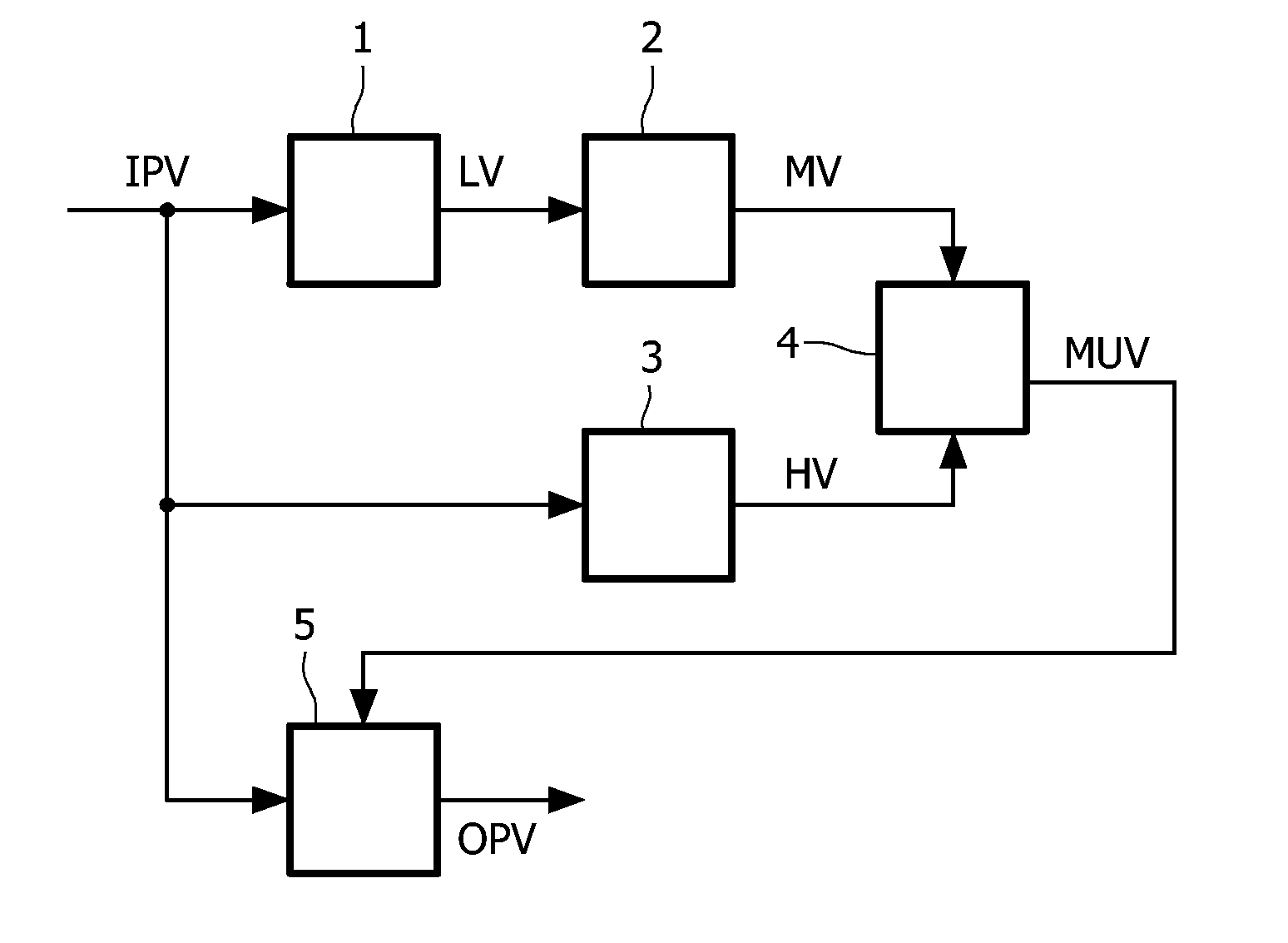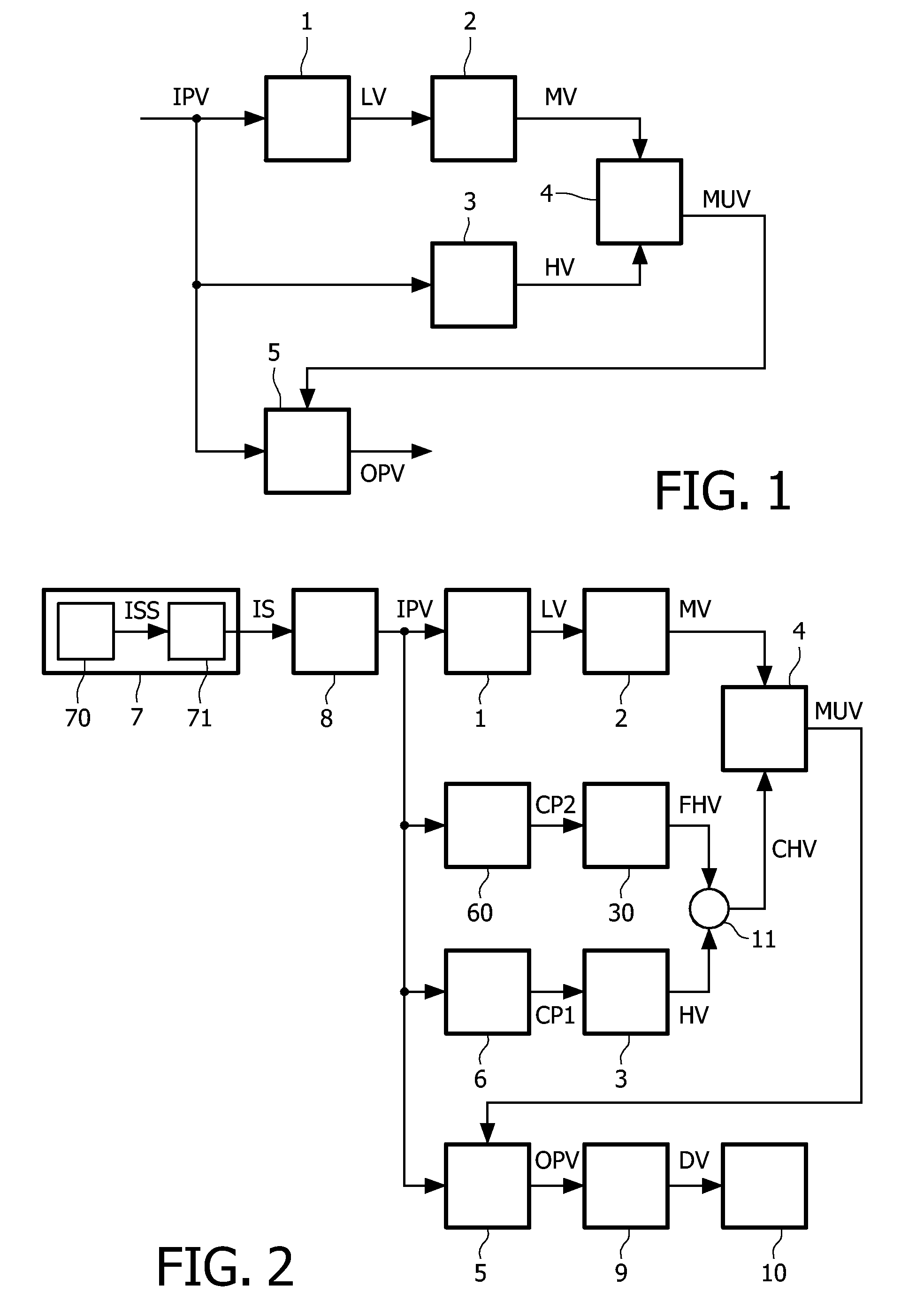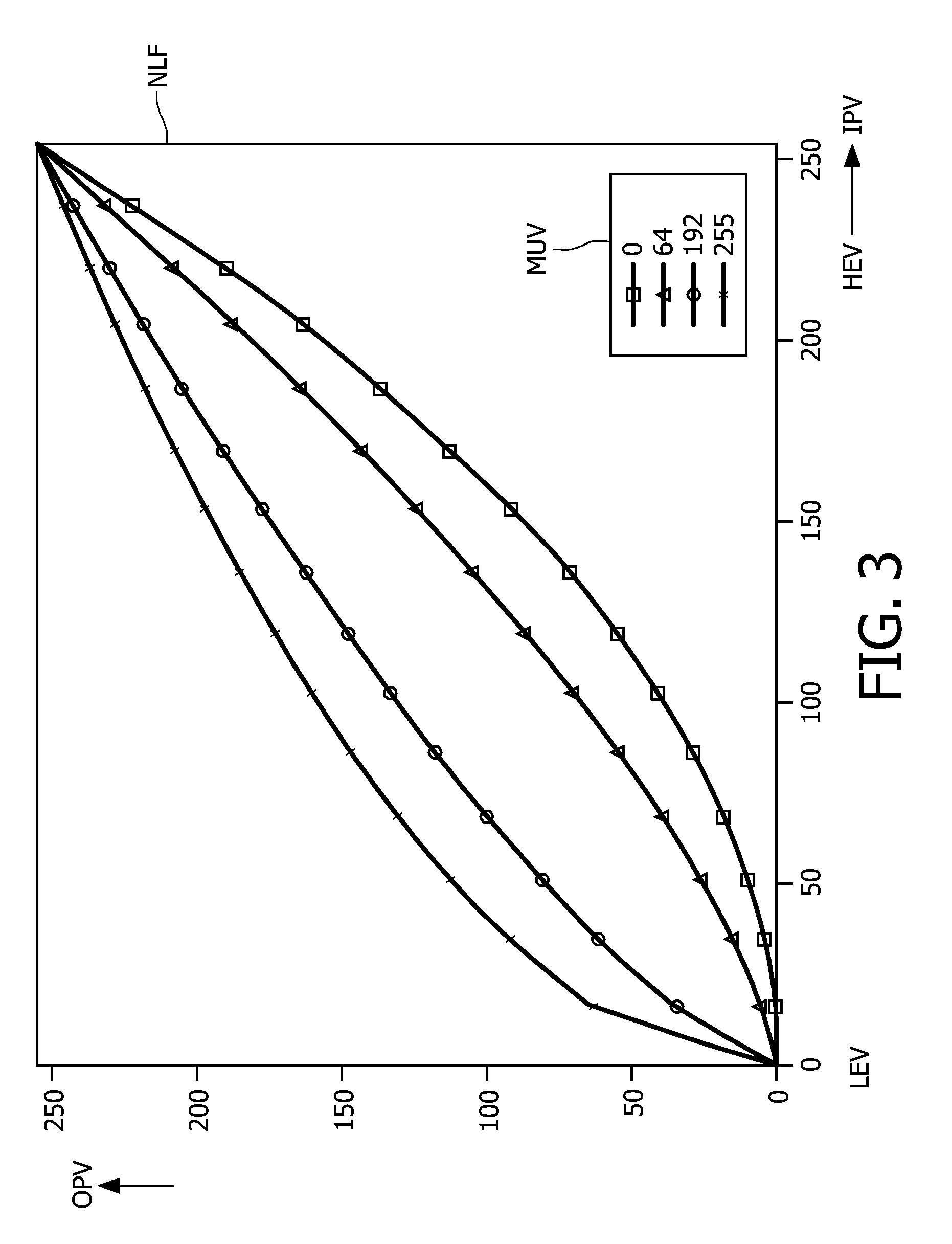Image detail enhancement
a technology of image detail and enhancement, applied in image enhancement, color signal processing circuits, instruments, etc., can solve the problems of reducing the contrast of images and increasing the noise in these parts of image content, so as to improve the detail of input images and reduce the effect of contrast reduction
- Summary
- Abstract
- Description
- Claims
- Application Information
AI Technical Summary
Benefits of technology
Problems solved by technology
Method used
Image
Examples
Embodiment Construction
[0033]FIG. 1 shows a block diagram of an embodiment in accordance with the invention for enhancing details in an input image. The blocks shown in FIG. 1 can be interpreted as hardware circuits, or as steps of a method. The steps of the method can be performed with dedicated hardware or with a suitably programmed processor.
[0034]The averaging filter (or the averaging function) 1 receives the input image, which in a digital system is represented by the input pixel values IPV, to supply the average brightness values LV. the averaging filter 1 may filter the input pixel values IPV with a Gaussian kernel. Alternatively other average filtering techniques may be implemented. Preferably, the averaging filter 1 is an edge preserving filter, such as a median filter. The averaging filter 1 provides or computes the tone mask associated with the input image at the selected video data dynamic range RA bounded by the lower and higher extreme values LEV and HEV.
[0035]The mask circuit (or the maskin...
PUM
 Login to View More
Login to View More Abstract
Description
Claims
Application Information
 Login to View More
Login to View More - R&D
- Intellectual Property
- Life Sciences
- Materials
- Tech Scout
- Unparalleled Data Quality
- Higher Quality Content
- 60% Fewer Hallucinations
Browse by: Latest US Patents, China's latest patents, Technical Efficacy Thesaurus, Application Domain, Technology Topic, Popular Technical Reports.
© 2025 PatSnap. All rights reserved.Legal|Privacy policy|Modern Slavery Act Transparency Statement|Sitemap|About US| Contact US: help@patsnap.com



